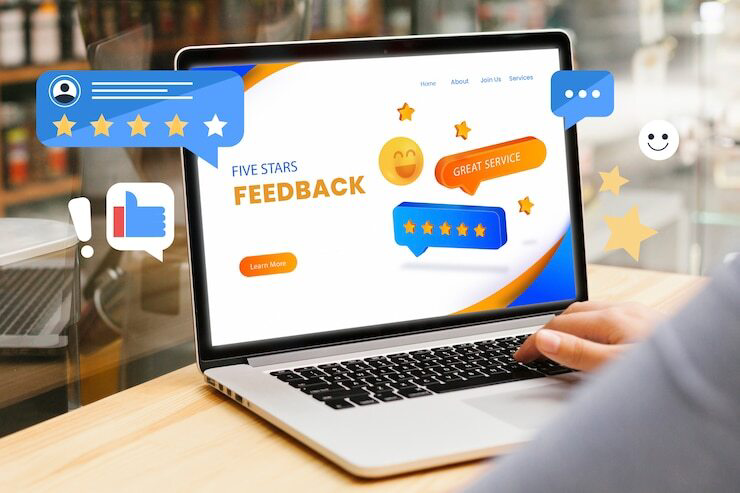In today’s world, the e-commerce sector does not require any introduction. Whether a startup or a multinational company, nowadays, every business is considering entering the e-commerce sector. Everyone wants to be their boss and run their businesses. E-commerce is one exciting way to achieve this goal, and the internet makes it easier than ever to get it. Still, it can be extremely challenging to determine precisely how to establish a profitable e-commerce business. As you create your e-commerce business plan, developing a strategy to prioritize your resources is necessary because there is so much information and many e-commerce terms to sort through.
If you’re looking to transition your business to the online marketplace, it’s important to have a solid plan in place. Here are 10 key steps to help you succeed in your e-commerce journey
1-Conduct Market Research
Before you start building your e-commerce site, it is important to research your target market and understand their needs and preferences.
2-The Right Platform
Many e-commerce platforms are available, and it’s important to choose the one that best fits your business needs and budget.
3-Develop a Strong Brand Identity
A strong brand identity can help you stand out in a crowded e-commerce marketplace. It includes designing a logo, choosing a color scheme, and creating a brand voice.
4-Product Shoot Or Video
Visuals are key in e-commerce, and high-quality product photography and videos can help you showcase your products in the best possible light. One of the best decisions you can make for your business is to invest in product photography for your eCommerce company
You will not only see an increase in your conversion rate, but you will also be able to enhance your marketing campaigns by using high-quality custom images, emphasizing the strength of your product through imagery, establishing your brand identity, and acquiring new customers. If you want your product to stand out from the competition, you should take high-quality, one-of-a-kind photographs of your product.
5- Digital Presence
Social media can be a powerful tool for building brand awareness and driving traffic to your site. Focus on building a powerful presence on the most relevant platforms for your target audience. You can stay relevant to your audience and connect with them by maintaining an active and consistent social media presence. Establish a social media strategy that best serves your business by determining which platforms your audience uses. Your brand maybe not be for all social media platforms. Managing public reputation can be improved by focusing on social media and review platforms.
You can connect with a larger audience by striving for a powerful digital presence. It may provide opportunities for your brand to increase engagement with your target audience, establish credibility, and uphold your reputation. Also, it takes a lot of work to create an online presence, but the benefits to your brand are well worth the effort.

6- Website's Layout
After launching your e-commerce site, it is essential to test your website’s layout, language, and placement of conversion elements. When customers visit your website, you have to ensure that it is simple to use, encourages them to buy your products, and provides clear instructions on how to do so. A well-optimized website can help you rank higher in search engine results pages and drive more traffic to your site. It includes optimizing for keywords, using meta tags, and creating quality content.
You should test the language on your product and landing page pages, the language in your conversion elements, and the placement of icons and elements strategically. You can check it using a variety of usability testing techniques.
7- AD Management
The success of your e-commerce business depends on AD management. While social media optimization, email marketing, and SEO all play a role in bringing customers to your online store, none of them can generate as much high-quality traffic rapidly.
There are many different options for ad platforms, as you probably already know from browsing the internet daily. Paid advertising can help you reach a larger audience and drive more conversions. You can use platforms like Google Ads and Facebook Ads to target your ideal customers.
8- Customer Service
Good customer service can help you build customer loyalty and drive repeat business. Make sure to respond promptly to inquiries and complaints, and go above and beyond to exceed customer expectations.
It takes time to develop relationships with customers and gain their trust, but in the end, it pays off. A customer with a positive experience with your company’s customer service is like to recommend it to others and return to the brand in the future. On the other hand, a customer who is dissatisfied with your service is more likely to spread the word, pointing their friends and family towards your rival. Data from Help Scout shows that 86% of customers will never shop at a store again if they had a bad experience and did not leave any feedback about it.
However, since only 4% of customers write about it, It may take some time to get positive feedback. As a result, recommendations are a significant way to get new customers. You could try to take advantage of them as part of your customer service by offering discounts and personalized messages to your current customers.
9-Email-Marketing Strategy
E-mail marketing is a great way to keep your customers engaged and informed about your products and promotions. Create targeted campaigns based on customer behavior and preferences.
10-Monitor Your Metrics
Finally, it is important to regularly monitor your website and social media analytics to track your progress and create adjustments to your strategy as needed.
Conculsion
Without a doubt, e-commerce has become an essential component of our society. Companies that take e-commerce seriously and devote sufficient resources to its development will be the ones that succeed in the future. E-commerce is a business-wide endeavor rather than a problem with IT. The benefits are likely to accrue to businesses that use it as a justification for completely redesigning their business procedures. In addition, e-commerce is a helpful technology that enables consumers to connect with businesses and organizations worldwide.
Transitioning your business to e-commerce can be difficult work, but by following these 10 key steps, you can set yourself up for success. With the right strategy, platform, and mindset, you can thrive in the competitive world of online retail.
